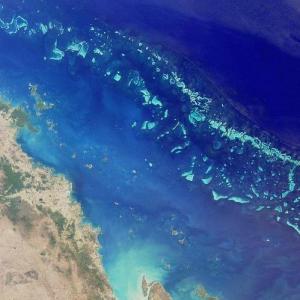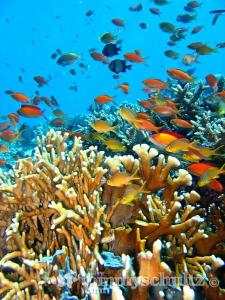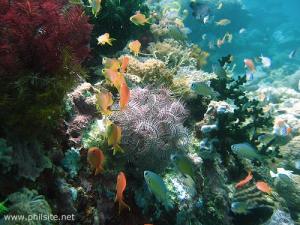I was looking for references for my project when I came across an article in NOAA’s site entitled, “25 THINGS YOU CAN DO TO SAVE CORAL REEFS”. The article gave ways on how in our own little ways, somehow save the corals by simply straying away from activities that may harm them or their environment and simply learning more about them.

Since our coral reefs today are in grave danger, our little efforts to save it could make their exsitence last longer. Coral reefs have a lot of benefits- it’s breaking of waves and purpose as a habitat are probably the most important ones. Because of this, I want to share to you NOAA’s ways on how to save and preserve our coral reefs.
The list of tings that you can do to save the corals is as follows,
1. Support reef-friendly businesses. Ask what your dive shop, boating store, tour operators, hotel and other coastal businesses are doing to save the coral reefs. This is especially important in coastal areas with reefs. Let them know you are an informed consumer and care about reefs.
2. Don’t use chemically enhanced pesticides and fertilizers. Although you may live thousands of miles from a coral reef ecosystem, these products end up in the watershed and may ultimately impact the waters that support coral.
3. Volunteer for a reef cleanup. You don’t live near a coral reef? Then do what many people do with their vacation: visit a coral reef. Spend an afternoon enjoying the beauty of one of the world’s treasures while helping to preserve it for future generations.
4. Learn more about coral reefs. How many different species live in reefs? What new medicines have been discovered in reef organisms. Participate in training or educational programs that focus on reef ecology. When you further your own education, you can help others understand the fragility and value of the world’s coral reefs.
5. Become a member of your local aquarium or zoo. Ask what they are doing and what your donation can do toward saving the world’s coral reefs. The answer may pleasantly surprise you.
6. When you visit a coral reef, help keep it healthy by respecting all local guidelines, recommendations, regulations, and customs. Ask local authorities or your dive shop hot to protect the reef.
7. Support conservation organizations. Many of them have coral reef programs, and your much-needed monetary support will make a big difference.
8. Spread the word. Remember your own excitement at learning how important the planet’s coral reefs are to us and the intricate global ecosystem. Sharing this excitement gets everyone you speak with involved.
9. Be an informed consumer. Consider carefully the coral objects that you buy for your coffee table. Ask the store owner or manager from what country the coral is taken and whether or not that country has a management plan to insure that the harvest was legal and sustainable over time.
10. Don’t pollute. Never put garbage or human waste in the water. Don’t leave trash on the beach.
11. Recycle. This is the first step each of us can take to make a change. Recycle anything and everything. If your community doesn’t have a program, do it anyway, and get one started.
12. Conserve water. The less water you use, the less runoff and wastewater that eventually finds its way back into our oceans.
13. Report dumping or other illegal activities. Environmental enforcement cannot be everywhere, and your involvement can make a big difference.
14. Keep it clean. You may be in the habit of picking up your own trash. You may even participate in an organized cleanup. But have you considered carrying away the trash that others have left behind?
15. Only buy marine aquarium fish if you know they have been collected in an ecologically sound manner. In some areas, marine fish harvested for the pet trade, are stunned with sodium cyanide so that capturing them is easier.
16. Surf the net! Many different addresses exist to link you to information about coral reefs and what you can do to become involved. A good starting point is at http://www.noaa.gov/public-affairs/coral-reef.html
17. Don’t start a liverock aquarium. Although this living rock is still harvested legally in some places, its collection is devastating to the reef organisms habitat.
18. Hire local guides when visiting coral reef ecosystems. Not only do you learn about the local resources, but you will be protecting the future of the reef by supporting a non-consumptive economy around that reef.
19. Don’t anchor on the reef. If you go boating near a coral reef, use mooring buoy systems when they are available.
20. If you dive, don’t touch! Take only pictures and leave only bubbles! Keep your fins’ gear, and hands away from the coral, as this contact can hurt you and will damage the delicate coral animals. Stay off the bottom because stirred-up sediment can settle on coral and smother it.
21. Participate in the Great American Fish Count. What better way to enjoy your vacation time than snorkeling or diving in America’s coral reefs and helping scientists better understand reef fish populations?
22. Volunteer. Volunteer and community coral reef monitoring programs are very important. If you do not live near a coast, get involved in your local save the river (bay, lake, or other estuarine environment) program. Remember, all watersheds affect the oceans and eventually the coral reefs.
23. Support the creation and maintenance of marine parks and reserves. Encourage your friends to get involved with projects to protect special areas.
24. Be a wastewater crusader! Make sure that sewage from your boat, from others’ boats, and from land is correctly treated. The nutrients from sewage feed growing algae that can smother and kill corals.
25. Inform yourself. Find out about existing and proposed laws, programs, and projects that could affect the world’s coral reefs.
Reference: http://www.publicaffairs.noaa.gov/25list.html
Make a change- Save the corals.
Marty Ramirez











